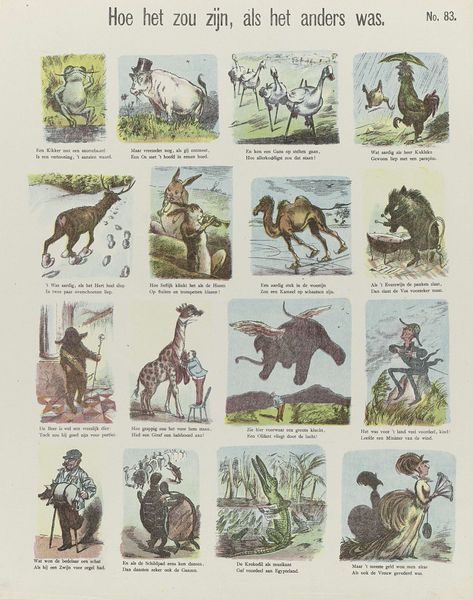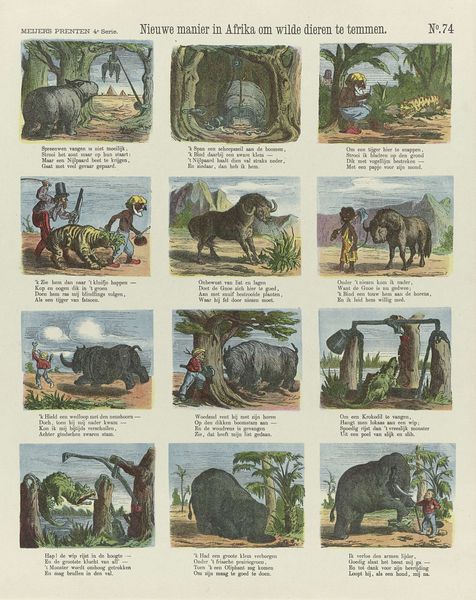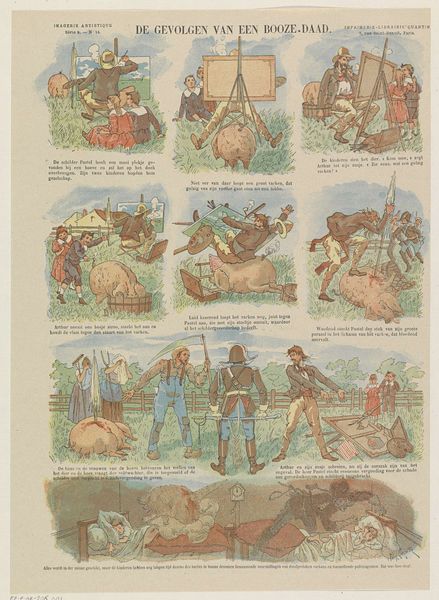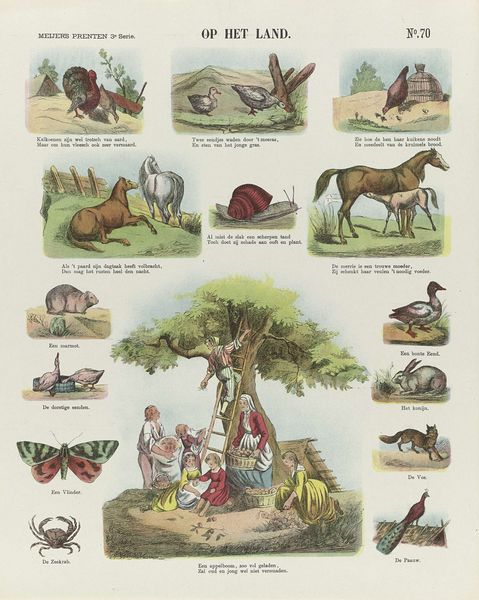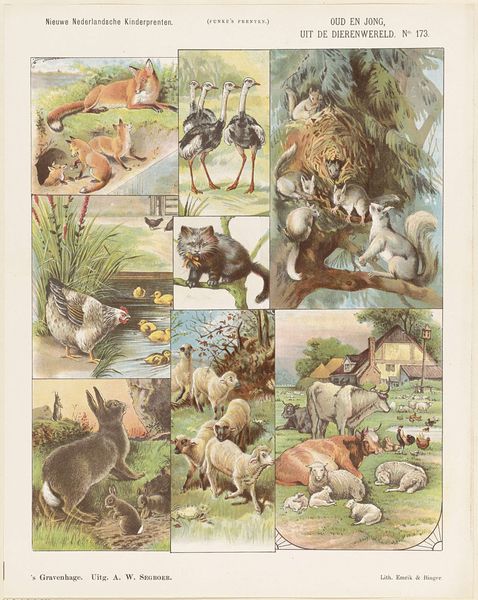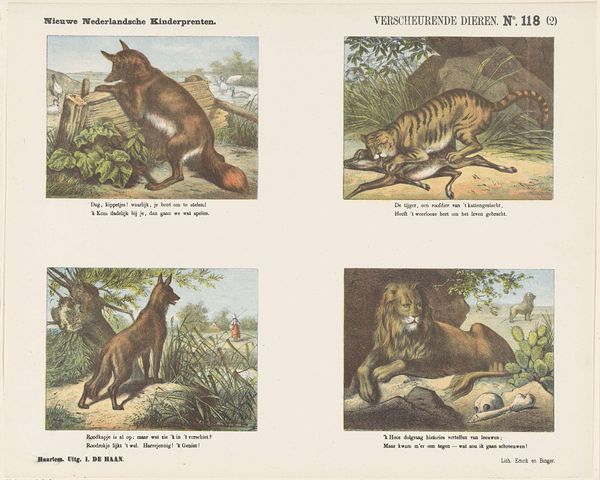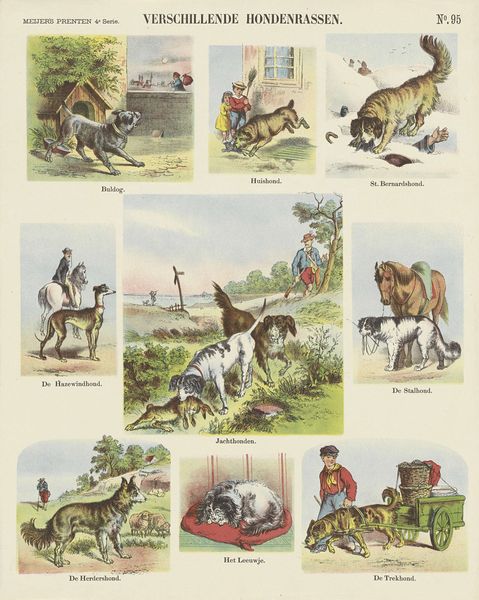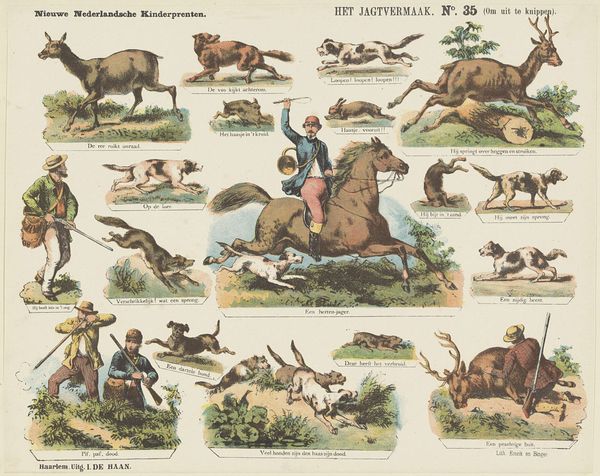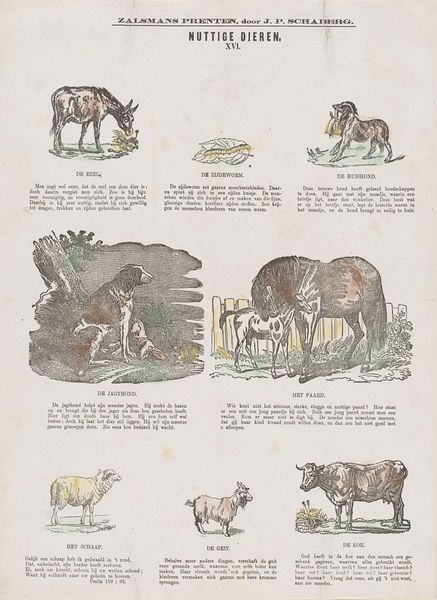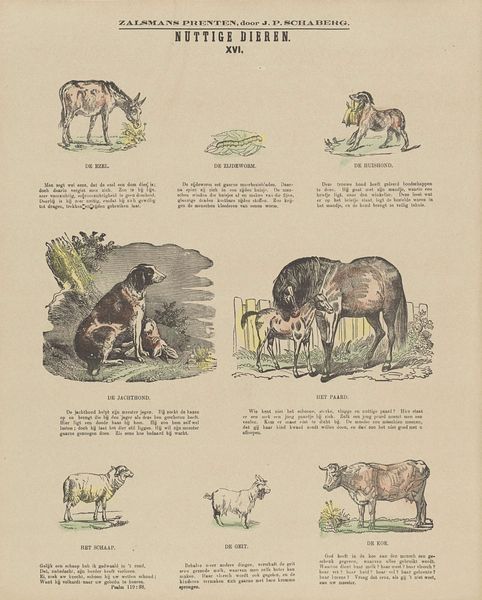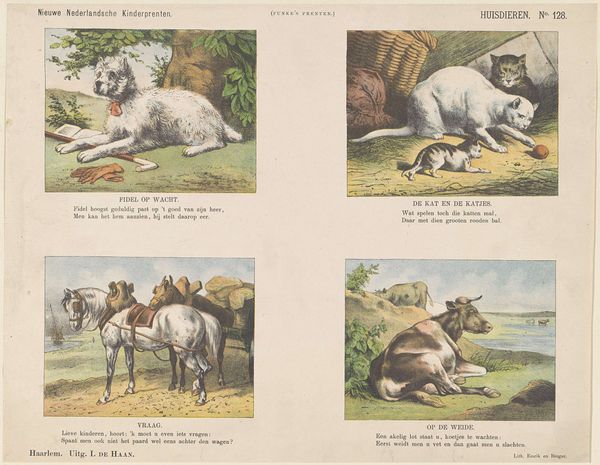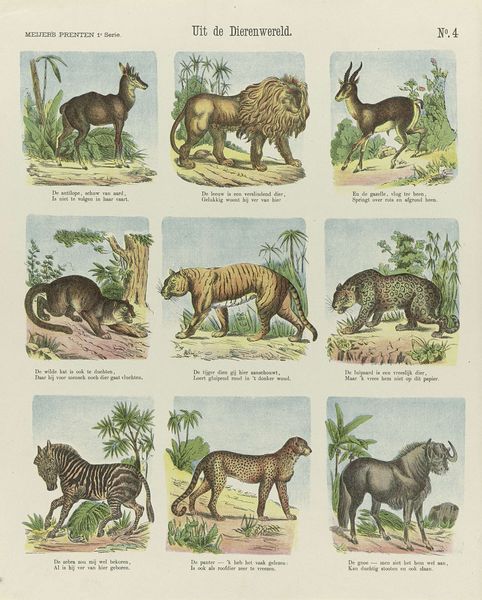
#
narrative-art
# print
#
genre-painting
Dimensions: height 425 mm, width 341 mm
Copyright: Rijks Museum: Open Domain
Curator: Here we have “Verschillende dieren,” or “Various Animals,” a print dating back to 1881 attributed to De Ruyter & Meijer. Editor: What strikes me immediately is its odd calmness. There's a certain stillness despite the predatory themes throughout. A strange sort of illustrated tranquility. Curator: That sense of stillness comes, I think, from the ordered nature of the composition. Each vignette, framed by its text, exists as a distinct visual unit. The limited palette, primarily soft blues, browns, and greens, furthers this cohesion. Note the flat perspective and graphic rendering; the scenes lack depth and naturalistic detail. Instead, attention is given to outlining each figure clearly and defining shapes distinctly. It adheres to established, formalized modes of representation. Editor: While I appreciate your analysis of form, let’s not overlook the very real power dynamics on display. We see various manifestations of power: the colonizer hunting ostriches, the shepherd protecting their flock with weapons, and the inescapable threat of predator and prey. Each scenario implicitly reinforces established hierarchies, normalising dominance and control in a way that serves the interests of the ruling class. I believe these narrative constructions can be deeply problematic, especially within the context of the history of the work and what the images mean to a contemporary audience. Curator: And yet, even understanding those hierarchies and issues that permeate our understanding, are the lines of action truly aggressive or combative? Most figures are stationary and arranged simply; each illustration appears self-contained with little external influence, despite themes of hunter and prey. It is orderly; almost bureaucratic in nature. Editor: I think reducing the scenarios to mere formal qualities is dismissive and frankly irresponsible. Are we going to just ignore this colonial narrative because of colors and shapes? Consider for a moment the implications behind showcasing such exploitative imagery, the normalisation of these themes through seemingly innocent illustrations perpetuates existing biases. That a work from this period might show racist and hierarchical overtones ought not be waved away. Curator: My focus isn't on dismissing that the imagery may well highlight harmful preconceptions. Instead, by addressing aspects of color theory and geometric balance, we can view how and why these messages proliferate by embedding themselves into popular visual art of the day. But I think this discussion demonstrates how diverse an interpretation we may gain by exploring just one singular artwork. Editor: Indeed. Perhaps these brief moments have illuminated just how multifaceted a seemingly simple print like "Verschillende dieren" truly is.
Comments
No comments
Be the first to comment and join the conversation on the ultimate creative platform.
